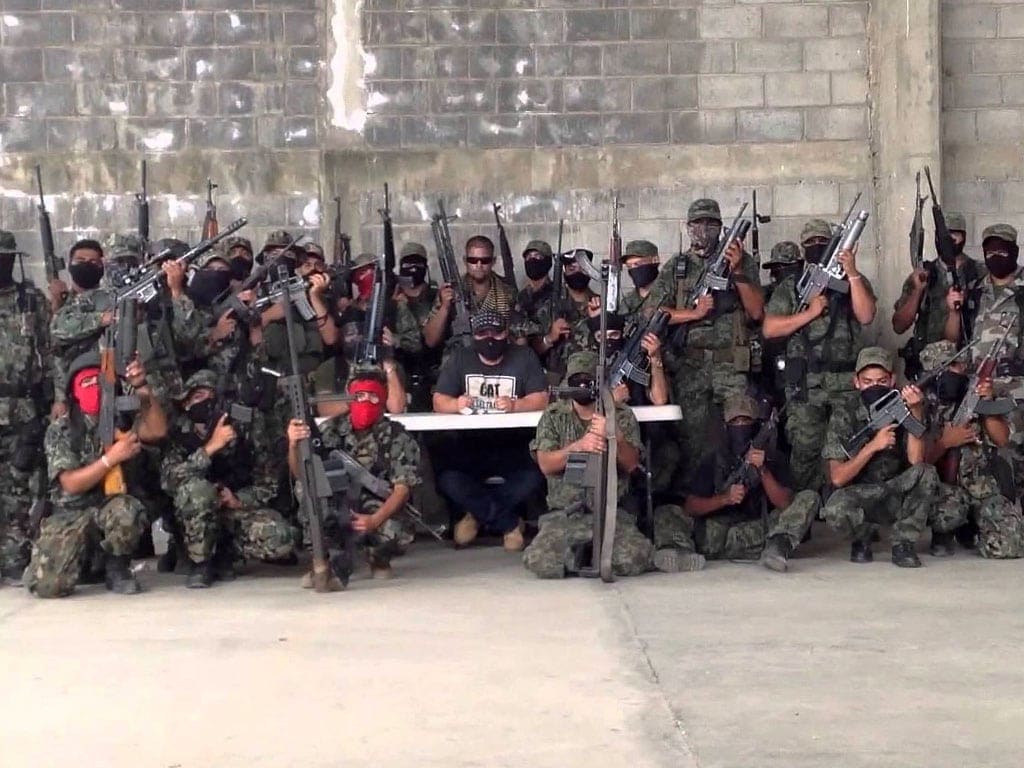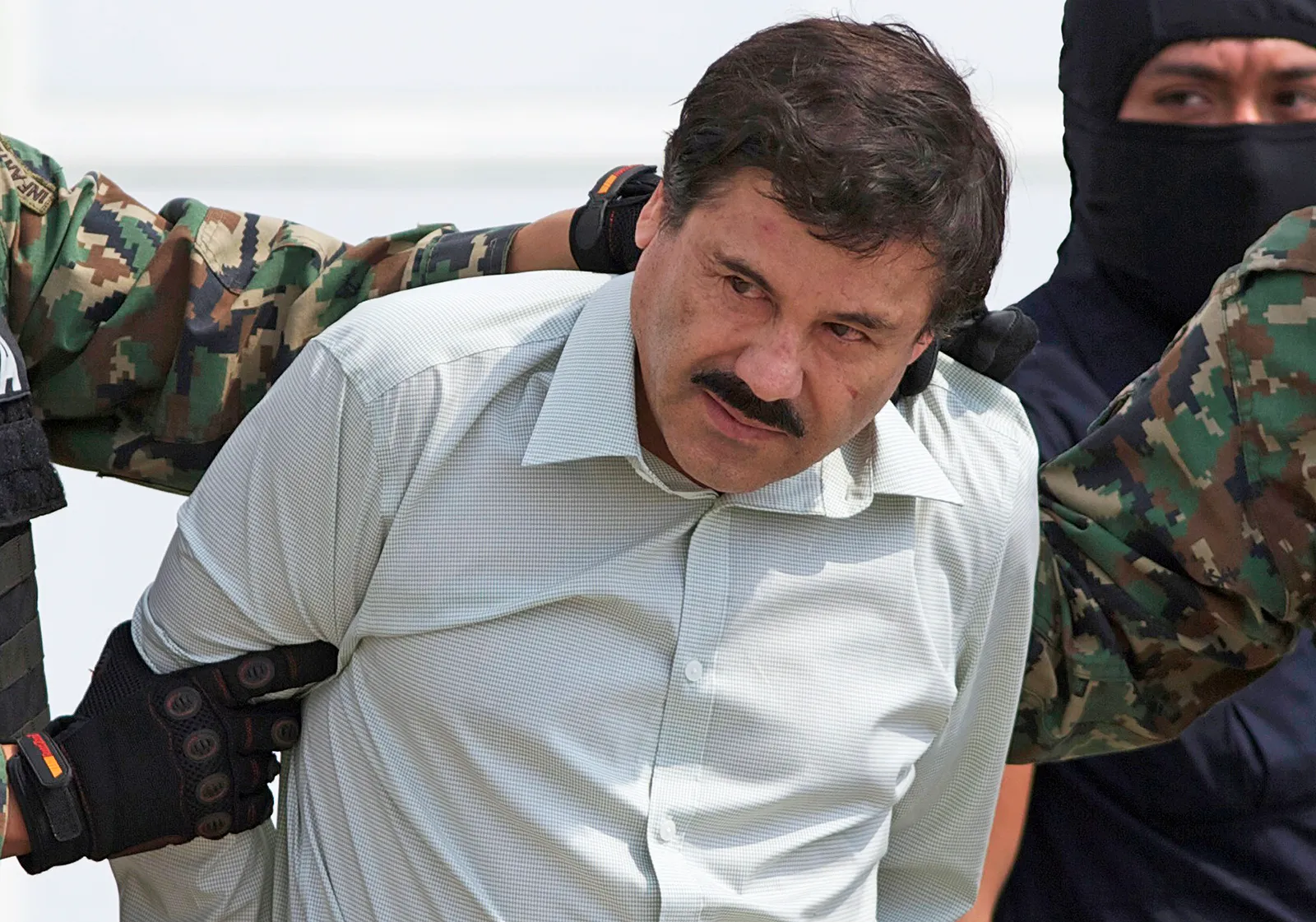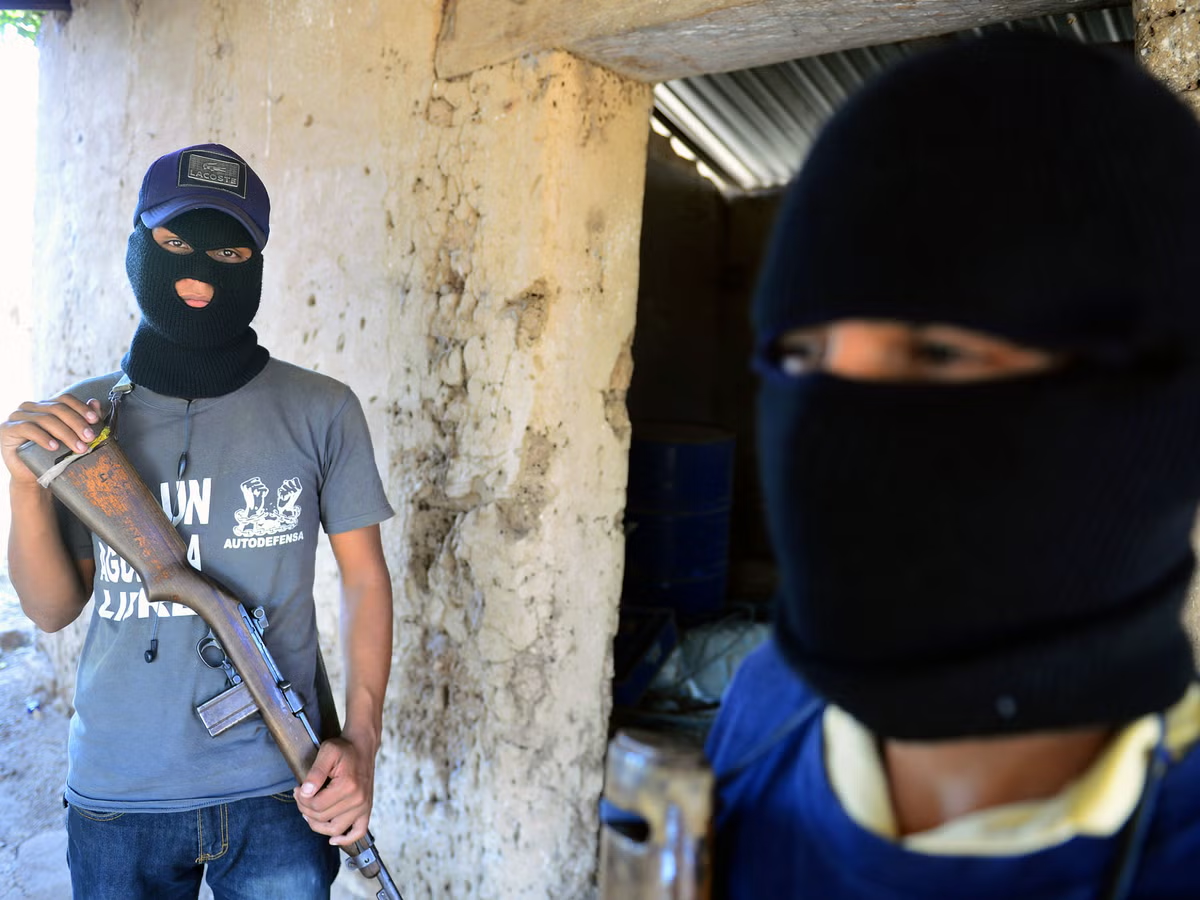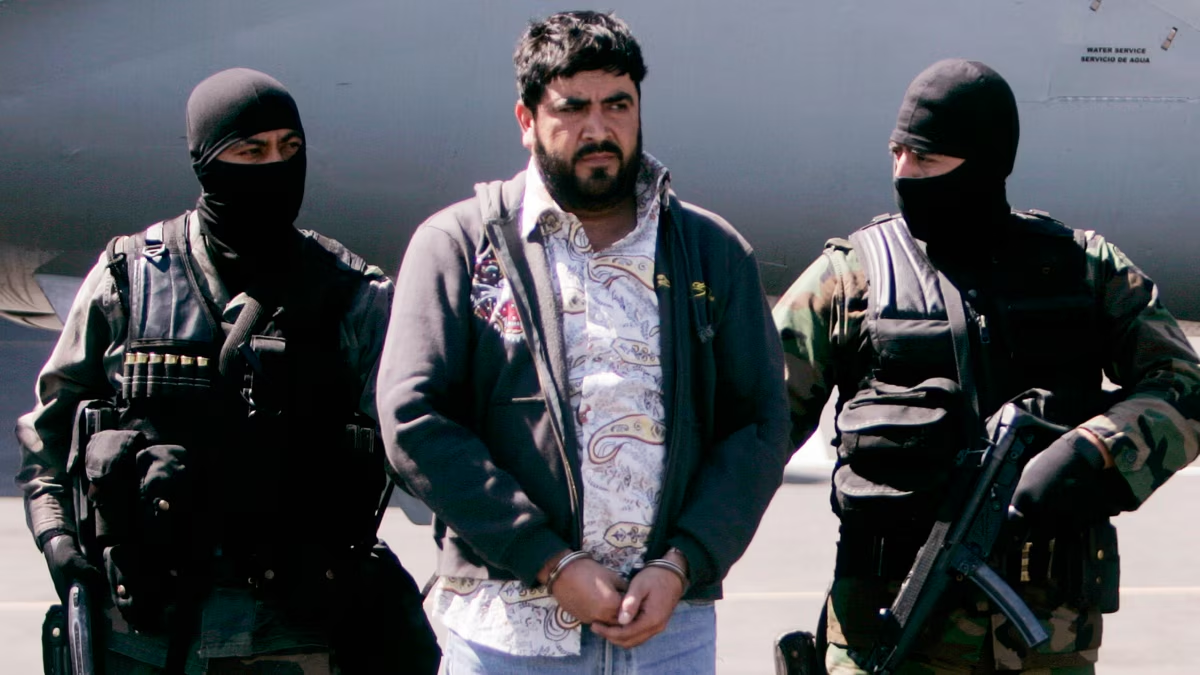Understanding the Ruthless Legacy of Mexico’s Cartel Empires
Imagine a world where power shifts are marked not by elections or corporate takeovers, but by brutal battles and clandestine strategies. Welcome to the underworld of gangs in Mexico, where cartel are as fluid as they are deadly and influence extends far beyond the dusty backstreets of narco territories.
These gangs, each with their own lore and legacy, have left indelible marks on the fabric of Mexican society and global crime. In this deep dive, we’ll peel back the layers of Mexico’s most infamous cartels, tracing their origins, their rise to infamy, and their current standings in a constantly evolving power game.
Whether you’re a curious onlooker or a seasoned aficionado of crime history, join us on a journey through the dark corridors of organized crime in Mexico.
1. Los Zetas: Military Precision Turned Merciless
Once the enforcement arm of the Gulf Cartel, Los Zetas transformed into one of the most formidable and ruthless cartels in the world. Originating from a group of defectors from the Mexican Special Forces, they brought military tactics, discipline, and firepower to the narco world. Their ascent to power in the early 2000s was marked by an unparalleled level of violence and brutality, earning them a feared reputation across Mexico and beyond.
Los Zetas carved out a niche by controlling drug trafficking routes with an iron fist and diversifying their criminal portfolio to include human trafficking, extortion, and arms smuggling. Their infamous activities, including mass murders and the grotesque display of their victims, have been seared into public consciousness.
Although their power has waned somewhat following the capture and killing of several key leaders, the legacy of Los Zetas as a paradigm of cartel savagery continues to influence cartel operations across Mexico. The echoes of their brutal tactics linger, illustrating the Mexican drug wars’ transformation into a ferocious battle for survival, making them one of the most dangerous gangs in Mexico.

2. Sinaloa Cartel: The Empire of El Chapo
The Sinaloa Cartel is arguably the most recognizable name in the annals of Mexican organized crime, synonymous with its infamous leader, Joaquín “El Chapo” Guzmán. Its roots stretch back to the 1980s, when it emerged from the fragments of older cartels, swiftly gaining a reputation for its strategic acumen in drug trafficking operations. Under El Chapo’s leadership, the Sinaloa Cartel epitomized the classic drug cartel image—powerful, elusive, and extraordinarily wealthy.
El Chapo’s daring escapes from maximum-security prisons have become the stuff of legend, illustrating both the cartel’s immense power and the deep corruption within Mexican institutions. Throughout its existence, the Sinaloa Cartel has adeptly navigated shifts in the political and criminal landscape, often opting for bribery over violence and forming alliances to expand its influence.
Today, despite El Chapo’s extradition and imprisonment in the United States, the cartel remains a formidable force in the drug trafficking world, continuing to facilitate the majority of the narcotics entering the United States.
Their business-like approach to drug trafficking not only keeps them at the pinnacle of the Mexican drug trade but also ensures that their narrative is central to any discussion of Mexican cartel leaders and drug trafficking in Mexico.

3. Jalisco New Generation Cartel (CJNG): The New Titans of Terror
A relative newcomer to the scene, the Jalisco New Generation Cartel (CJNG) quickly distinguished itself as one of the most aggressive and ambitious cartels in Mexico. Formed around 2010 as a splinter group from the Milenio Cartel, the CJNG under the leadership of Nemesio Oseguera Cervantes, also known as “El Mencho,” has rapidly expanded its territorial control and operational reach.
The cartel’s rise is characterized by its willingness to engage in direct confrontations with both the Mexican government and rival cartels.
The CJNG has been notorious for its brutal acts of violence, which include downing a military helicopter and orchestrating numerous high-profile assassination attempts on government officials. This strategy of high-intensity conflict has not only garnered them a fearsome reputation but has also propelled them into a dominant trafficking role, particularly in methamphetamines and fentanyl.
Their operational model—marked by extreme violence and extensive use of propaganda—mirrors a paramilitary organization more than a traditional drug trafficking operation. As of today, the CJNG’s influence continues to grow, making them a central figure in narratives about Mexican gang violence and the ever-evolving landscape of Mexico’s cartel wars.

4. Gulf Cartel: The Old Guard
Tracing its origins back to the 1930s, the Gulf Cartel is one of the oldest criminal organizations in Mexico, initially involved in smuggling alcohol during the Prohibition era. As Prohibition ended, they adapted and expanded into drug trafficking, establishing themselves as a formidable force along the Gulf of Mexico. This cartel was instrumental in laying the groundwork for the Mexican drug trade, utilizing established smuggling routes to transport cocaine and marijuana into the United States.
Throughout its history, the Gulf Cartel maintained its power through a combination of political connections and brute force, often employing private armies. However, the landscape shifted dramatically for the cartel with the split and eventual rise of Los Zetas, initially formed as the armed wing of the Gulf Cartel.
The violent split weakened the Gulf Cartel, leading to ongoing territorial disputes and diminishing influence. Despite these setbacks, the Gulf Cartel remains active, primarily focused on drug trafficking and smuggling, though their hold on territories has been significantly challenged by rival cartels.
Their story is emblematic of the organized crime in Mexico, showcasing a blend of historical influence and the inevitable challenges of sustaining power amidst rising competition.

5. Tijuana Cartel: A Family Affair
The Tijuana Cartel, also known as the Arellano Félix Organization, was once among the most powerful drug trafficking syndicates in Mexico, dominating the drug flow into California. Founded by the Arellano Félix brothers in the late 1980s, this cartel capitalized on its strategic location in Tijuana, a major border city just south of San Diego. The family-run cartel managed a lucrative drug trafficking operation, characterized by its violent enforcement tactics and strategic alliances with other criminal groups.
The Tijuana Cartel’s power peaked in the 1990s, but internal family conflicts and relentless pressure from law enforcement led to its gradual decline. High-profile arrests and assassinations within the leadership fragmented the cartel’s structure, leading to splinter groups and allowing rivals to encroach on their territory.
Despite its reduced status, the Tijuana Cartel remains active, involved in drug trafficking, but with a much-diminished influence. Their saga is a stark portrayal of the volatility of narco culture in Mexico, where familial ties and criminal enterprises often intermingle with violent and tragic outcomes.

6. La Familia Michoacana: The Zealots
La Familia Michoacana originated with a strong ideological stance, portraying itself as a vigilante group protecting the local population from rival cartels and government forces. Emerging in the early 2000s in the state of Michoacán, this group claimed a moral high ground, ostensibly fighting against methamphetamine use within Mexico, while paradoxically becoming one of the largest producers and exporters of the drug. Their contradictory policies were coupled with a deeply entrenched religious fervor, making them unique among the cartels.
Under the leadership of Nazario Moreno, also known as “El Más Loco” (The Craziest One), La Familia introduced a new level of psychological manipulation and cult-like control over its members, often requiring them to carry Bibles and attend Christian services. However, the death of Moreno in 2010 and subsequent government crackdowns splintered the group, leading to the rise of the Knights Templar Cartel, a breakaway faction.
Today, remnants of La Familia continue to operate but with significantly reduced influence, focusing mostly on localized criminal activities. Their legacy remains a complex chapter in the history of Mexican drug trafficking, marked by their use of religious manipulation and social control to maintain power.


7. Knights Templar (Los Caballeros Templarios): The Crusaders of Crime
The Knights Templar Cartel, an offshoot of La Familia Michoacana, inherited its predecessor’s quasi-religious ideology and expanded upon it with a medieval knightly mythology. Founded in 2011, they named themselves after the historic knightly order, promising to protect the people of Michoacán from both the Mexican government and rival cartels.
Their leader, Servando Gómez Martínez, known as “La Tuta,” utilized media and propaganda to portray the cartel as a righteous force, despite their brutal tactics and criminal activities.
The Knights Templar quickly became known for their deep involvement in not only drug trafficking but also in extortion, illegal mining, and logging, turning into a significant economic force in the region. Their rule was marked by strict codes of conduct and brutal enforcement, which included public executions and other acts of violence that they often justified with their twisted ideological narrative.
The Mexican government’s focused efforts in Michoacán, combined with vigilante self-defense groups fighting back against the cartel, led to a major decline in their power by 2015. Despite their diminished status, the impact of the Knights Templar on the communities they controlled remains a powerful reminder of how drug cartels can embed themselves into the social and economic fabric of regions they dominate.

8. Beltrán-Leyva Organization: From Allies to Adversaries
The Beltrán-Leyva Organization began as part of the powerful Sinaloa Cartel, led by the Beltrán-Leyva brothers who were once close associates of Joaquín “El Chapo” Guzmán. The cartel’s split from Sinaloa in 2008 marked a significant turning point in the Mexican drug wars, as it transformed from allies to fierce competitors.
The Beltrán-Leyva Cartel rapidly established itself as a major player in the drug trafficking industry, known for its ruthless approach to dealing with enemies and its ability to infiltrate Mexican law enforcement and government.
Under the leadership of Arturo Beltrán-Leyva, nicknamed “The Boss of Bosses,” the cartel engaged in bloody conflicts with the Sinaloa Cartel, leading to a spike in violence across several Mexican states. The cartel’s operations were extensive, ranging from drug trafficking to money laundering and arms smuggling.
Despite the death of Arturo in a shootout with Mexican marines in 2009, the cartel managed to continue operations under various leaders. However, the ongoing capture and killing of its top leaders have greatly weakened its structure and power base.
The story of the Beltrán-Leyva Organization underscores the volatile nature of cartel alliances and the brutal realities of cartel leadership struggles, shaping much of the history of Mexican cartels.

9. Juárez Cartel: The Persistent Force
The Juárez Cartel, once a dominant force in the Ciudad Juárez region across from El Paso, Texas, has been entrenched in the drug trafficking scene since the 1970s. Founded by Amado Carrillo Fuentes, known as “The Lord of the Skies” due to his use of airplanes to transport drugs, the cartel leveraged its strategic location to become a key entry point for drugs into the United States.
The Juárez Cartel was involved in a notorious turf war with the Sinaloa Cartel, which dramatically escalated the violence in the region, making Ciudad Juárez one of the most dangerous cities in the world at one point.
Despite suffering heavy losses in leadership and manpower, especially following the death of Carrillo Fuentes in 1997 during a botched plastic surgery intended to alter his appearance, the cartel has shown remarkable resilience. It continues to operate, although with a reduced influence, focusing on regaining control and influence over its primary routes.
The Juárez Cartel’s history is emblematic of the persistence and adaptability of Mexican cartels in the face of internal leadership crises and external pressures from rival cartels and law enforcement. Their ongoing presence in the drug trade highlights the challenges of eradicating organized crime groups that have deep roots in their local communities.

10. Los Negros: The Enforcers Turned Cartel
Originally formed as the armed wing of the Beltrán-Leyva Organization, Los Negros played a crucial role as enforcers for the cartel, engaging in some of the most violent clashes during the height of the Mexican drug wars. Under the leadership of Edgar Valdez Villarreal, also known as “La Barbie” due to his light complexion and striking features, Los Negros were instrumental in carrying out hits and securing territories for their bosses.
However, as the Beltrán-Leyva brothers’ power waned, “La Barbie” sought to establish his own power base, transitioning Los Negros from mere enforcers to a standalone cartel.
This shift marked a new chapter in the group’s operations, expanding into kidnapping, extortion, and continued involvement in drug trafficking. The notoriety of Los Negros grew with their brutal tactics, which were often publicized in the media, drawing both national and international attention to their activities.
The eventual capture of “La Barbie” in 2010 and his extradition to the United States significantly weakened Los Negros, leading to their gradual decline as other cartels filled the vacuum they left behind. The story of Los Negros is a vivid illustration of the fluid dynamics within Mexican cartels, where loyalty shifts, power changes hands rapidly, and survival often necessitates brutality and betrayal.
The world of Mexican cartels is complex and often misunderstood, woven with narratives of violence, power struggles, and an unyielding grip on the drug trade. Each cartel, from the old guard like the Gulf Cartel to newer, more brutal organizations like the CJNG, tells a part of the larger story of Mexico’s ongoing battle with organized crime.
Understanding these dynamics is crucial not just for those directly affected in Mexico but also for international observers and policymakers who deal with the ramifications of these cartels’ actions worldwide.
These organizations are more than just criminal enterprises; they are a significant part of the socio-economic and political fabric of Mexico, influencing life far beyond their immediate locales. As Mexico continues to fight against these powerful entities, the tales of their rise, reign, and sometimes fall serve as stark reminders of the challenges faced in restoring peace and order to affected communities.
Awareness and informed discussion are key components in crafting effective strategies to combat the influence of these formidable cartels.
